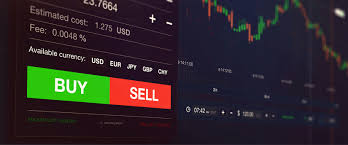
Understanding Forex Trading: An Illustrated Example
Forex trading, or foreign exchange trading, is the process of buying and selling currencies on the foreign exchange market with the aim of making a profit. It is one of the largest financial markets in the world, with an average daily turnover exceeding 6 trillion USD. For those just starting their journey, understanding forex trading through an example can be incredibly beneficial. In this article, we will explore a practical forex trading scenario, uncover essential concepts, and provide insights into successful trading strategies. Additionally, if you’re looking to start your trading journey, consider checking out forex trading example Trading Broker UZ for more information on trading opportunities.
The Basics of Forex Trading
Forex trading involves trading currency pairs, such as EUR/USD, GBP/USD, or USD/JPY. Each pair consists of two currencies: the base currency and the quote currency. The base currency is the first currency in the pair, and the quote currency is the second. The price of the currency pair reflects how much of the quote currency is needed to purchase one unit of the base currency.
For example, if the EUR/USD pair is trading at 1.2000, it means that 1 Euro can be exchanged for 1.20 US Dollars. When trading forex, traders buy one currency while simultaneously selling another, thus always dealing with pairs.
Setting Up a Trading Account
Before you can start trading, you need to set up a trading account. This involves choosing a forex broker, completing the registration process, and depositing funds into your account. Your broker provides the platform where you will execute your trades, and you must select one that aligns with your trading goals.
When selecting a broker, pay attention to their regulation, fees, trading platform features, and the types of accounts they offer. A well-regulated broker can help ensure the safety of your funds and offer peace of mind while trading.
A Practical Example of Forex Trading
To illustrate how forex trading works, let’s consider a practical example. Imagine you believe the Euro will strengthen against the US Dollar. You decide to buy 10,000 units of the EUR/USD currency pair when the exchange rate is 1.2000.
Step 1: Placing Your Trade
You enter a buy order for 10,000 EUR at 1.2000. Given that you are buying 10,000 Euros, the cost of your trade in USD will be:
10,000 EUR x 1.2000 USD/EUR = 12,000 USD

Step 2: Monitoring the Market
Now it’s time to monitor the market. Suppose after some time, the EUR/USD exchange rate rises to 1.2150. You decide to close your position to secure your profits.
You sell your 10,000 EUR at the current market price, which is 1.2150:
10,000 EUR x 1.2150 USD/EUR = 12,150 USD
Step 3: Calculating Your Profit
Your profit from this trade can be calculated as follows:
12,150 USD – 12,000 USD = 150 USD
In this example, you made a profit of $150 by correctly predicting the direction of the market. However, it is vital to note that trading forex also comes with risks, including the potential to lose all your capital.
Risk Management in Forex Trading
Effective risk management is crucial for long-term success in forex trading. Traders often use various tools and techniques to protect their capital, including:
- Stop-Loss Orders: These are orders placed to automatically close a trade at a predetermined price level, limiting potential losses.
- Position Sizing: This involves determining the appropriate amount of capital to risk on a single trade based on your overall account size and risk tolerance.
- Diversification: By diversifying your trades across multiple currency pairs, you can reduce the risk of a significant loss from one trade impacting your overall account balance.
Conclusion
Forex trading presents an exciting opportunity for traders to speculate on currency movements and potentially generate profits. By understanding the mechanics of trading, setting up a proper account, and implementing risk management strategies, you can navigate the forex market more effectively.
Always remember that trading involves risk, and it is essential to educate yourself and practice on a demo account before committing real funds. Whether you are a beginner or an experienced trader, the principles remain the same: research, practice, and continuous learning are the keys to successful forex trading.
